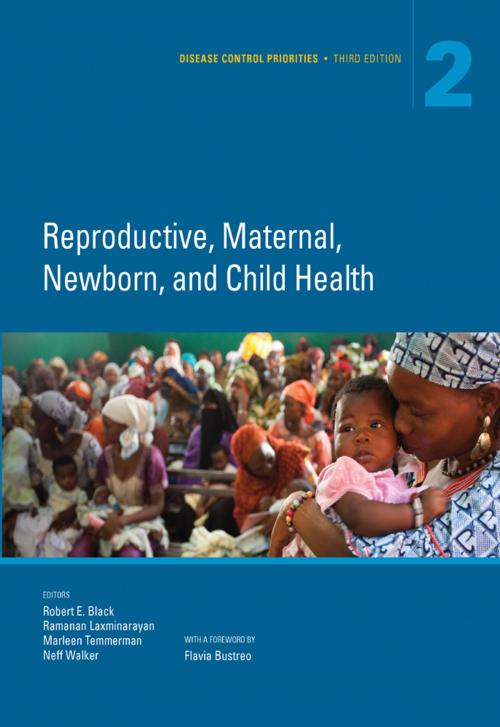Disease Control Priorities, Third Edition (Volume 2)
Reproductive, Maternal, Newborn, and Child Health
Nonfiction, Health & Well Being, Medical, Specialties, Reproductive Medicine| Author: | ISBN: | 9781464803680 | |
| Publisher: | World Bank Publications | Publication: | April 11, 2016 |
| Imprint: | World Bank Publications | Language: | English |
| Author: | |
| ISBN: | 9781464803680 |
| Publisher: | World Bank Publications |
| Publication: | April 11, 2016 |
| Imprint: | World Bank Publications |
| Language: | English |
The evaluation of reproductive, maternal, newborn, and child health (RMNCH) by the Disease Control Priorities, Third Edition (DCP3) focuses on maternal conditions, childhood illness, and malnutrition. Specifically, the chapters address acute illness and undernutrition in children, principally under age 5. It also covers maternal mortality, morbidity, stillbirth, and influences to pregnancy and pre-pregnancy. Volume 3 focuses on developments since the publication of DCP2 and will also include the transition to older childhood, in particular, the overlap and commonality with the child development volume. The DCP3 evaluation of these conditions produced three key findings: 1. There is significant difficulty in measuring the burden of key conditions such as unintended pregnancy, unsafe abortion, nonsexually transmitted infections, infertility, and violence against women. 2. Investments in the continuum of care can have significant returns for improved and equitable access, health, poverty, and health systems. 3. There is a large difference in how RMNCH conditions affect different income groups; investments in RMNCH can lessen the disparity in terms of both health and financial risk.
The evaluation of reproductive, maternal, newborn, and child health (RMNCH) by the Disease Control Priorities, Third Edition (DCP3) focuses on maternal conditions, childhood illness, and malnutrition. Specifically, the chapters address acute illness and undernutrition in children, principally under age 5. It also covers maternal mortality, morbidity, stillbirth, and influences to pregnancy and pre-pregnancy. Volume 3 focuses on developments since the publication of DCP2 and will also include the transition to older childhood, in particular, the overlap and commonality with the child development volume. The DCP3 evaluation of these conditions produced three key findings: 1. There is significant difficulty in measuring the burden of key conditions such as unintended pregnancy, unsafe abortion, nonsexually transmitted infections, infertility, and violence against women. 2. Investments in the continuum of care can have significant returns for improved and equitable access, health, poverty, and health systems. 3. There is a large difference in how RMNCH conditions affect different income groups; investments in RMNCH can lessen the disparity in terms of both health and financial risk.















